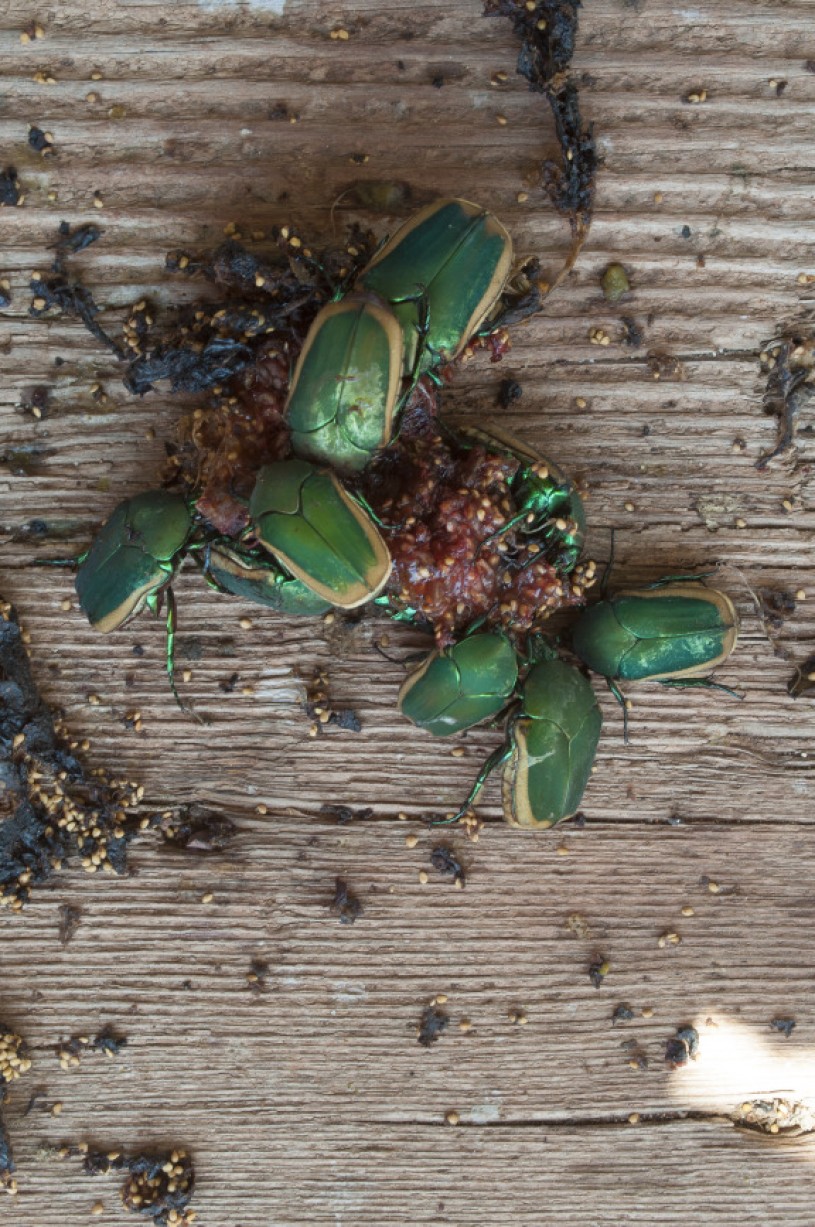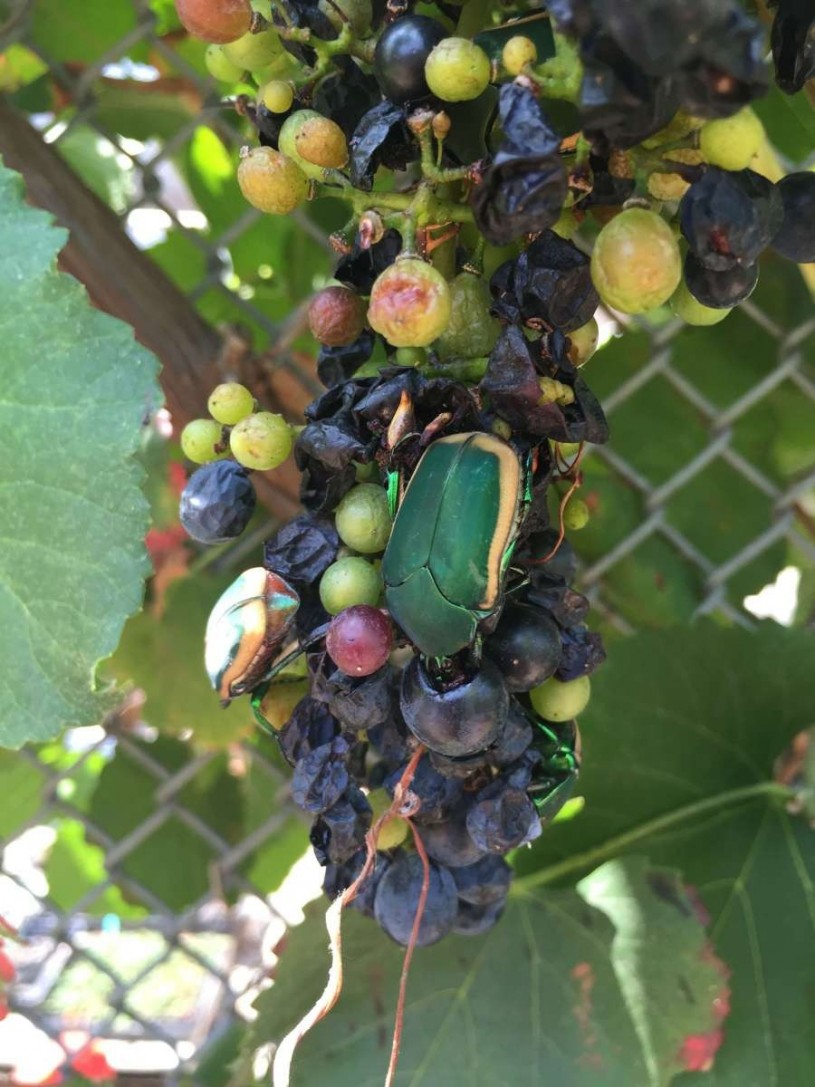When Fig Beetles Attack!
It’s a beautiful summer day in L.A. and I am strolling across a wide open lawn. The sky is bright blue and decorated with scattered clouds.

It’s a beautiful summer day in L.A. and I am strolling across a wide open lawn. The sky is bright blue and decorated with scattered clouds. The sun shines with that lazy-afternoon-golden-California glow and the grass tickles my toes. A bird sings sweetly and the whole scene is so idyllic it is cliché. Suddenly, a loud buzz and “WHACK!”, something the size of a large marble slams straight into the side of my face. Meet the fig beetle.
Fig beetles (Cotinis mutabilis), also known as figeater beetles or green fruit beetles, are a Southwestern species of beetle that careen through the air with the grace of a charging rhinoceros. They are loud, they are big (often around an inch long), and they are everywhere right now. Visitors to the Museum often point straight to the fig beetle in our drawer of local insects from the BioSCAN Project and recount horrifying tales of being “attacked” by these giant beetles. These audacious beetles even made an appearance on live TV over the weekend: Fig beetles are gorgeous, metallic-green beetles in the family Scarabaeidae, commonly known as scarab beetles. This group includes many beautiful jeweled beetles, as well as the sacred beetles of ancient Egypt (AKA dung beetles: informative, but rather silly video on the dung beetle here).
As visually striking as these large beetles are, it is the fact that they are literally striking folks around L.A. that has our attention. Why do they keep attacking us? And why are there so many of them? First off, the fig beetles are NOT actually attacking. Even when they fly directly into the side of your face when you are walking across an open lawn. They are just clumsy. Really clumsy. Part of this is surely pure mass, as fig beetles support a lot of weight as they fly around looking for food and mates. I also attribute part of their lack of proper navigation to the fact that they are apparently too lazy to lift their front wings (the hard, shell-like elytra), so they instead stick their hind wings out from underneath their “shell”. This is also what creates the loud buzz they make when in flight.

And why are there so many of these beetles around right now? In late summer when local fruit trees are heavy with over-ripe fruit, the fig beetles have a plentiful food source and emerge to eat and find mates. Like their name suggests, they will certainly eat figs, but they also love many other types of fruit (below you see them eating grapes in the NHMLA Nature Gardens and the photo directly above shows them eating their namesake fruit in the NHMLA Edible Garden) and even nectar from flowers (photo at top of the blog post).

So, don’t begrudge the clumsy fig beetle. They are helping our city by consuming the rotting fruit in our city, and are completely harmless to us. Unlike the East Coast beetles they are commonly mistaken for (green june beetles, Cotinis nitida, and Japanese beetles, Popillia japonica), fig beetles are not generally destructive as larvae (East Coast lookalikes can damage lawns). In fact, “crawly backs”, the 2-inch long grubs that eventually turn into our shiny beetle friends, are often found in compost piles helping breakdown our garden compost! The term “crawly back” comes from the unique method of locomotion the grubs have where they flip onto their backs to scoot along (clumsy movement is clearly not restricted to adults!). The fig beetles are a friendly bunch, and a helpful addition to our urban ecosystem. You just have to get used to getting whacked in the face on occasion.
(Posted by: Emily Hartop)